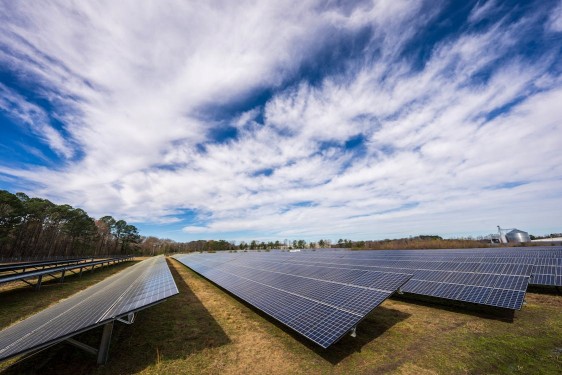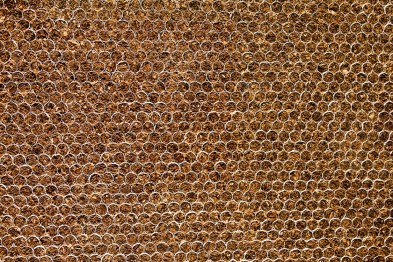Disadvantages of Bifacial Solar Panels
Bifacial solar panels, as their name suggests, are equipped with solar cells on both sides. Bifacial panels known to be more energy efficient than the traditional mono-facial solar panels, and have increasingly been gaining acceptance in the renewable energy industry. With that being said, even though they can bring many benefits to the table, they come with their own set of shortcomings that are important to keep in mind while going for them.
If you are looking for a cost comparison between bifacial and monofacial solar panels, check out the article below:
Bifacial vs Monofacial Solar Panel Cost Comparison
In this article, we will talk in detail about some of the drawbacks or disadvantages of Bi-facial solar panels. Here are some disadvantages of Bi-facial Solar Panels:
Table of Contents
Top Disadvantages of Bifacial Solar Panels
1. Higher Initial Costs
The main downside of bifacial solar panels is the higher upfront cost compared to standard monofacial products. Although bifacial panels have been in the industry for some time now, manufacturing them requires different technology and materials (which also costs more, They are also more. expensive to build because some panels have to use specialized glass at the back, which adds more cost as compared to a conventional mono-facial solar panel
This leads to increased cost of manufacturing which reflects in the market price of the product, making it not the best choice for those with a limited budget. Naturally, if you are a residence or small business owner with more limited margins to work, that extra expenditure may not be worth the energy return later.
2. Difficult to Install
Another drawback of bifacial solar panels is the difficult installation process. Position is very important for this, as they absorb sunlight from both the front and the rear end to generate electricity. This requires that they be installed at least 4 meters above the ground or the surface and have enough surface beneath the back end to reflect the diffused sunlight which is not always possible.
They are great on surfaces that reflect light (white rooftops or over white rocks/gravel), However, installing them over traditional dark roofs or grass would reduce their reflectivity and thus lessen the amount of incident light that can be gathered, directly affecting their power output, which is why people opt for them in the first place. Additionally, the racking system for bifacial panels is typically more complex and expensive, keeping all these considerations in mind, the installation of a Bi-facial solar PV system as compared to a conventional Mono-facial one would require more technical considerations and expertise, which would add to the costs of installation.
3. Heavier and More Fragile
Their design is heavier and more fragile in part due to having glass on both sides, instead of the opaque backsheet that is attached to the rear side of a monofacial panel. Being glass, it’s more prone to breakage when the panels are transported and installed bringing it on par with mild steel in terms of life cycle cost. This calls for caution while in transit leading to increased costs associated with it. They also do not come with a metal encapsulation common to the mono-facial panels, thus further adding to the need for protection.
Bifacial panels are also heavier than mono-facial panels because of solar cells on both faces. An average Mono-facial panel weighs between 15-20 pounds while Bi-facial panels can weigh up to 25-40 pounds, which can increase the load on mounting systems as well, in addition to the roof or ground. This can mean additional costs in terms of stronger support systems.
4. Limited energy gain in non-ideal environments
Though bifacial panels maximize sunlight capture by producing power from both sides, the final output is greatly influenced by their environment. In some areas (e.g. grass fields or under shade) very little reflected light hits the solar panel from behind giving a minimal beneficial gain of energy surplus on the back side. Moreover, their energy output can vary due to climate changes as well, during snowy winters, rain, etc., which could negate the expected boost in energy production and make the added cost of bifacial panels unwarranted.
Urban areas that are heavily shaded, or rooftops where this is little to no reflection of sunlight would severely compromise the efficiency of bifacial panels — much more than for standard monofacial solar technology. In those cases, monofacial PV systems might be the safe and trusted choice.
5. Increased Need for Maintenance and Cleaning
Bi-facial panels, having solar cells may require more frequent inspection and cleaning efforts than their monofacial counterparts. Since the panel is displayed on both sides, it may become dirty over time, and dirt, dust, or other debris can settle on either surface resulting in a significant loss of energy production. For good results, the front and back of the panels need to be cleaned frequently which implies higher maintenance costs.
Bifacial panels can also get soiled on the backside more easily than monofacial models—especially when (like most mounting systems used today) they’re relatively close to the ground, or above surfaces that kick up a lot of dust– because winds and air currents produced by its operation as well as differential heating among other factors, move dirt around. After all, the back of it is exposed to these elements so performance degradation will be at a quicker pace if not taken care of properly.
Today, the market has a hoard of solar panel cleaning professional services as well as tools like cleaning robots, waterless vibrators, squeegees, high-pressure hoses, etc., While these tools facilitate and ease the solar panel cleaning process, they might find Bi-facial panels, particularly the rear surface if not very accessible.
6. Limited long-term performance data
Despite the increased adoption and appreciation for bifacial solar panels, long-term data is limited, because the technology is still new compared to monofacial panels, and there just isn’t enough historical data available for us to have a good idea of exactly how bifacials will perform decades from now. It can leave consumers without a clear sense of whether benefits outweigh cost at the point of sale.
In addition, bifacial panels are likely to suffer from efficiency-related degradation because they have tempered glasses on both sides of the panel. Glass on the backside of a panel may be susceptible to damage from things like hail, wind, or debris that would lead to wear and tear in the panels over time, affecting their efficiency.
7. Not Ideal for Home Installations
. Bifacial solar panels are not usually incorporated into residential applications since such modules perform significantly better when it comes to commercial or utility-scale projects. Thus opting for a Bifacial solar PV system for residential purposes might make it expensive, and sometimes unnecessary as the average residential solar system requires no more than 5kW to 10kW of power output, which can be met easily with the conventional monofacial systems.
For solar projects at home, bifacial panels often provide minimal added energy as rooftop space is limited. Additionally, they may require specialized mounting systems or reflectors to be optimally effective, something many homeowners might not be able to invest the money (or effort) into.
For the average homeowner, monofacial panels are probably a better ROI simply because they cost less initially and provide decent returns in the long-term as well.
8. Temperature fluctuations
Bifacial solar modules, like all types of PV panels are affected by temperature fluctuations. But their dual-glass side plates keep the captured heat in for a longer time as the glass acts like an insulating layer. Since solar panels are less efficient in very hot climates, this means that more the heat that is retained due to reflected radiation, the more it will impact their performance and energy output.
This heat sensitivity could be a serious handicap in regions of intense temperatures as it may cause the panels to underperform, curbing the total energy saved.
So, these were some undersides of Bi-facial solar panels that one needs to be mindful of while going for solar. However, technological innovations are a constant in today’s world and the latest developments and products manufactured by the leading companies are overcoming the above-mentioned shortcomings.
Check out some of the leading manufacturers of Bi-facial solar panels in the USA to understand the product better!
Top 3 Bifacial Solar Panels
1. Sun Power:
Based in Silicon Valley with an industry experience of more than 35 years, SunPower is one of the leading manufacturers of Solar Panels in the USA, specializing in both Mono-facial and Bi-facial Solar Panels.
Company Name | SunPower |
Founded | 1985 |
Size | 1000-5000 employees |
Location | Richmond, California |
Website |
Top Product Pick: Performance 6 COM-M Bi-Facial(530-555W), integrated with sophisticated technology and premium material, check it out on their website and schedule a consultation, to determine if it fits your needs!
2. Q Cells:
Based in the USA and Canada, Q Cells offers cutting-edge solar panels, both Mono-facial and Bi-Facial with their top tier Q.auntum technology ensuring high performance as well as a product warranty of 25 years
Company Name | Q Cells |
Founded | 1999 |
Size | 500-1000 employees |
Location | Irvine, California |
Website |
Top Product Pick: Q Cells 480W 156 Half-Cell Mono Tier 1 Bi-Facial Panel
3. Auxin Solar
One of the most reputed manufacturers of Solar Applications in the USA, Auxin Solar is not only known for its high-quality and a wide range of products but its prompt and quick customer service as well. They offer both Mono-facial and Bi-facial solar panels with variants ranging between 435W to 600W
Company Name | Auxin Solar |
Founded | 2008 |
Size | 51-200 employees |
Location | San Jose, California |
Website |
Top product pick: AXN10B Bifacial High Efficiency N Type Double Glass Solar Panels
Frequently Asked Questions
In terms of energy efficiency, solar panels are better than solar shingles. In terms of appearance, solar shingles have an edge over solar panels with their sleek and sophisticated look.
Solar panels and Shingles can last 25-30 years. However, it varies from company to company .
A solar shingle, also known as solar roof tiles, are composed of semiconducting material and work to harness solar energy and convert it into electricity. It is an advanced roofing solution.
A solar panel is made up of solar cells, which are typically monocrystalline or polycrystalline, whereas solar tiles are made of Copper Indium Gallium Selenide. The function of solar panels is energy production, whereas solar tiles were designed to be an alternative roofing option while producing electricity.





